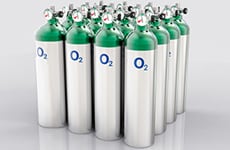Arizona

- State Population: 7,359,197
- Local Health Departments: 15
- Frequent Public Health Emergencies: Infectious Disease Outbreaks, Power Outages, Extreme Heat
- Key Emergency Operations Center Activations:
2020 – COVID-19 Pandemic - CDC PHEP Funding:
FY 2022: $13,142,567
FY 2021: $12,695,698
FY 2020: $12,164,945 - Public Health Crisis Response Funding:
Mpox 2023 Funding: $725,760
Mpox 2022 Funding: $461,040
COVID-19 2021 Funding: $43,570,409
COVID-19 2020 Funding: $16,221,912
- Epidemiologists: 4
- Laboratorians: 9
- Planners: 4
- Other: 13*
*Includes IT specialists, administrative staff, statisticians, and other positions
- Medical Material Management and Distribution
- Public Health Surveillance and Epidemiological Investigation
- Medical Countermeasure Dispensing and Administration
- Public Health Laboratory Testing
- Community Preparedness

In Arizona, PHEP supports a CDC scientist, known as a Career Epidemiology Field Officer (CEFO), who works with local American Indian communities to help prevent the spread of hantavirus. Hantavirus is passed from rodents to people and can cause a severe respiratory condition that is fatal in about 38% of those who get it. The CEFO and her team led prevention efforts that included identifying and tracking cases using a rapid screening tool, training 75 clinicians at three tribal medical centers to report suspected cases, and educating the community on steps to take within their homes to reduce the spread of hantavirus.

Four days of severe winter storms in 2017 resulted in power outages in Gila County, Arizona. This created a particularly dangerous situation for people requiring medical equipment that runs on electricity. Anticipating a potential shortage of oxygen, the local fire department requested assistance from county, tribal, and healthcare partners. Because of established agreements with these partners under PHEP, emergency responders were able to get additional oxygen from partners to the fire department within one hour of the request, ensuring affected residents had no gap in access to life-saving medical supplies.